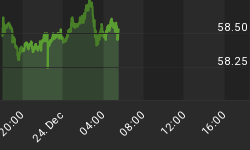Below is an extract from a commentary originally posted at www.speculative-investor.com on 1st November 2007.
The Stock Market and the Business Cycle
In the 16th April 2007 Weekly Update we discussed the Economic Confidence Model that was developed by Martin Armstrong (Princeton Economics) decades ago based on the theory of an 8.6-year global business cycle. A graphical representation of the Model is included below.

Martin Armstrong's Economic Confidence Model has predicted a number of major financial and economic turning points with eerie precision, but as we noted in the aforementioned commentary:
"Despite its successes the Model can...be difficult to apply in real time because even when it pinpoints a major turning point the nature of the turning point is often not apparent in advance or even at the time it is occurring.
The current situation is a good example of how the Model can be difficult to apply in real time because at this stage it is not clear what, if any, important turning point was identified by the most recent major peak (26th February of this year). The Model is quite well known, so some traders undoubtedly sold shares in anticipation of something happening in late February. This precautionary/anticipatory selling along with a 9% plunge in the Shanghai stock market on 27th February led to sharp declines in equities and commodities throughout the world, making it seem, for a few weeks, as if the Economic Confidence Model had pinpointed a major turning point in the global growth theme. However, subsequent events suggest that such a turning point did not occur in February."
We went on to say:
"Scanning the financial world for signs of an important recent trend change, the one thing that stands out is the weakness in the financial establishment (banks and brokerages). For example, the Philadelphia Bank Index (BKX) hit an all-time high on 20th February, but unlike many other markets/sectors it has not experienced much of a rebound from its March low. It's therefore possible that the Economic Confidence Model's latest major peak has coincided with an important top in the financial sector."
As time goes by it is becoming increasing likely that the Model's latest major peak (26th February 2007) did, indeed, coincide with an important top in the financial sector, and that this top for the financial sector is related to an important top in the credit cycle. For example, late February of 2007 was when the spread between long-term and short-term interest rates bottomed and when the sub-prime lending issue shifted to centre stage.
The 2007.15 major peak in the Economic Confidence Model appears to be of a similar nature to the major peak of 1998.55 (18th July 1998). The major 1998 turning point marked the end of the interest rate convergence trade that was popularised by the Long Term Capital Management hedge fund and, as evidenced by the following chart of the Bank Index (BKX), the beginning of a 5-year consolidation in the banking sector. Note that the BKX rose to test its July-1998 peak on a number of occasions during 1999-2002, but that its consolidation didn't end until the 8.6-year business cycle bottomed during the final quarter of 2002. Something similar this time round would result in the banking sector reaching its ultimate correction low during the second quarter of 2011.

A final point worth mentioning is that like the 1998.55 major business cycle peak the 2007.15 peak did not usher-in the ultimate high for global equities. There was a serious setback for equities during July-October of 1998, but led by the tech sector the senior stock indices remained in long-term upward trends until the 2000.7 minor business cycle peak. Something similar this time round would result in the global stock market rally reaching its ultimate high during the first quarter of 2009.
Quick note on the uranium sector
We've included the following long-term chart of Cameco (NYSE: CCJ), the world's largest uranium producer, to illustrate the uranium sector's tendency to reach an intermediate-term peak during the first four months of the year. The arrows on the chart point to the intermediate-term peaks that occurred during January-April in 5 of the past 6 years (this year's peak for CCJ actually occurred in June, but most uranium stocks peaked in April).
If the pattern continues then the rally in the uranium sector that got underway between August and October of this year shouldn't reach its ultimate high until the first 4 months of next year.
















